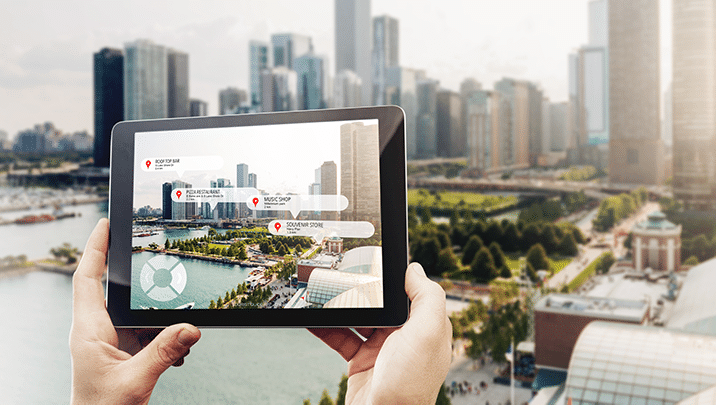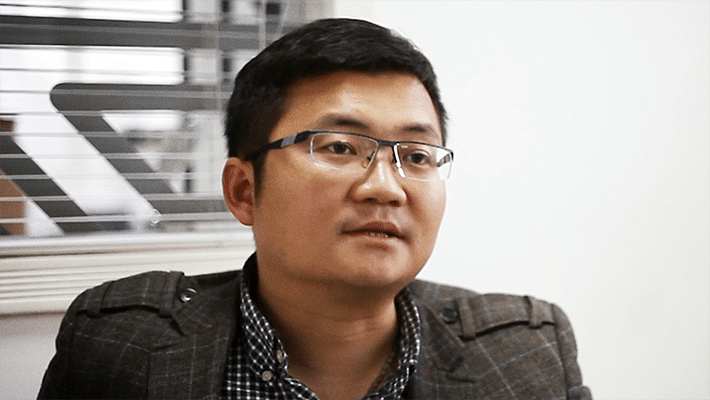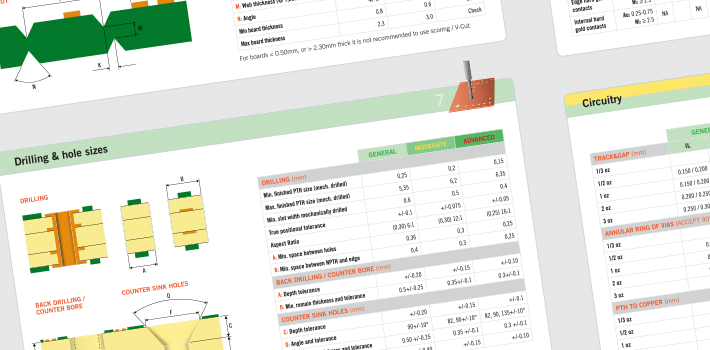The transition to the new generation of mobile communications, 5G, has already begun in Asia and the United States. Samsung expert Chris Shu recommends all companies look more closely at what this revolution can mean for new opportunities – and to think new.
MORE ARTICLES ON THIS TOPIC:
Chris Shu worked on business and product development in mobile communications during the turn of the millennium. As a consultant he helped businesses shape their strategies when they were rolling out their mobile 3G services in Europe. That eventually led to a R&D job with Sony Ericsson in China, followed by more consulting work. In 2010, Chris Shu took up a position at Samsung, where he is currently Vice President, Head of Product Strategy. He is responsible for the company’s low and mid-range mobile phones globally and for all mobile phone products in China. The fifth generation of mobile communications, 5G, is now being rolled out globally, this time, with a different group of countries at the forefront of development.

“Official estimates from the Chinese government predict that by 2035, 5G will contribute the equivalent of $2 trillion a year to global growth.”
Chris Shu
Vice President, Head of Product Strategy, Samsung
“Before the rollout of 3G, and even with 4G, there was a great deal of excitement in Europe. I do not notice the same thing happening today. So far, many in Europe seem to be treating 5G much as they would technical terminology,” says Chris Shu.
Instead, it is in Asia and the United States where things are happening. Commercial 5G services started to be implemented in South Korea, China and the United States in 2019, while services are scheduled to be launched in Japan in 2020. What we are seeing with all the countries at the forefront is that their governments have made the transition a priority. In Europe, many countries have been asking questions to certain suppliers on issues relating to national security, while at the same time operators have been put off by high costs. Finally, many end users are happy with what they already have.
“But companies and anyone who wants to be involved in driving developments have to start looking at the new possibilities the technology can bring and the potential for new business that 5G can generate. Official estimates from the Chinese government predict that by 2035, 5G will contribute the equivalent of $2 trillion a year to global growth. It is high time people started to creatively and actively develop different scenarios for their current business or for wholly new business ideas enabled by the technology change,” he continues.
By 2025, the user base for 5G mobile telephones is estimated to reach 500 million in China alone, which is equivalent of one third of all users. The corresponding figure in Europe is 200 million that the same year and 189 million in the United States. The coronavirus crisis may of course slow this development initially, but 5G will undoubtedly become increasingly prevalent in the next four years. Network equipment suppliers and companies involved in building the networks will benefit when all the new technology is rolled out. There will also be a need for more 5G base stations than was the case with 4G, and many places such as malls and railway stations will have their own in-house networks.
5G will involve a paradigm shift

More importantly, the transition to 5G will be more pronounced/marked compared to what we experienced with the previous generation shifts. We are seeing a paradigm shift right from the start. For the first time ever, mobile communication is no longer primarily about communication between people. It is just as much – or more – about communication between people and things, as well as communication between connected things. The transition is still in its infancy, which means that there are massive new business opportunities to tap into.
“If 4G can be said to have changed your life, then 5G can change the whole of society. Companies must now think outside the box without limiting themselves to current business areas, business models or working methods.“
Chris Shu
Vice President, Head of Product Strategy, Samsung
“If 4G can be said to have changed your life, then 5G can change the whole of society. Companies must now think outside the box without limiting themselves to current business areas, business models or working methods,” says Chris Shu.
Simply put, there are three aspects of 5G that will contribute to this transformation: a much faster transfer rate, new possibilities for real-time control, and enable more or less everything to be connected to the Internet.
“5G will enable speeds of many gigabits per second without fiber. It completely changes what we perceive as fast mobile internet and has all the prerequisites to create new applications in, for example, entertainment, AR (Augmented Reality), VR (Virtual Reality), distance learning and not least healthcare,” explains Chris Shu.
An example of how the viewing experience can be revolutionized comes from South Korea. For example, the operator SK Telecom has launched a service where the viewers themselves control camera angles when watching a baseball game filmed by a large number of 5G cameras installed at the stadium. Other things to come are virtual meetings using AR and virtual visits to, for example, museums with VR.

”In the healthcare sector, one can think of many possible applications. For example, I am myself involved in a project to develop a connected, hand-held ultrasonic scanner one can use to diagnose to carry out diagnoses remotely. Even remote medical operations can become a reality.”
The opportunities for real-time control, in turn, enable a more highly automated manufacturing industry with smart factories. Within public transport, it can pave the way to major improvements, possibly through self-driving buses, but also through enabling traffic management to see actual needs in real-time and adapt traffic accordingly. Another area is agriculture, where crops can provide better harvests thanks to data collection and the ability to manage for example, irrigation, in real time.
“When everything is connected it means changes even at a societal level. This could be a double-edged sword. On the one hand, it offers the potential to build a safer society with more efficient resource utilization, for example when responding to emergencies. When a traffic accident occurs, all necessary resources could be directed to the location automatically. On the other hand, personal privacy may be affected when a large number of cameras and sensors are installed in public places,” says Chris Shu.
The transition to 5G can also lead to various opportunities when it comes to the shortfalls of the resources needed. As SK Telecom’s baseball service illustrates, telecom operators can become media providers or, for example, create social networks. The opportunity to create new revenue streams can help justify the large investments operators would have to make.
“Of course, suppliers of terminals, such as Samsung and our Chinese competitors, will have a great deal to gain from the transition. Flagship 5G phones are already being shipped, but the big difference will be felt when launch and mid-segment phones come onto the market, which has been delayed due to the corona virus crisis. A lot of peripherals such as adapters, gateways and so on will also need to be replaced. Apart from that, the need for wifi in homes will disappear.
A great many aspects of the transition still remain unclear. When it comes to payment methods or how the different applications might be designed, there is much room for the players in this process show and apply their creativity. Entire companies can be built around new solutions.
“At the basic level, 5G involves a lot of connected sensors that transmit large amounts of data at a very high speed, as well as a platform that can handle this, with applications on the platform that can respond to all the data. Entertainment, smart homes, cloud solutions and gaming, in all of these areas, we will see platform changes and major investments in platforms striving for a dominant role in the future,” Chris Shu believes.
New solutions and applications are going to appear in many areas. No matter what sector of industry they may be operating in, businesses have a lot to gain from taking the 5G transition on board in good time.
“Everything will not happen at once. Some scenarios are easier to implement than others. We will see a rapid change within the entertainment segment. Probably within agriculture as well, while the transition to smart factories has already started. Other things will take time. For example, a lot of the infrastructure in our society will need to be updated and changed. We also need to see a change in people’s mentality if, for example, we are going to actually use self-propelled vehicles. If I were to venture a guess about how things will shape up in the future, I would that it will perhaps take ten years for these changes in society to fully implement,” he concludes.
Crucial functionality in the 5G network
EMBB – Enhanced Mobile Broadband
Delivers transmission speeds of up to 20 times higher than in 4G. The experience will be completely different with, for example, the ability to download a feature film in seconds.
EMTC – Enhanced Machine Type Communication
Supports ten times the number of connections compared to 4G within a certain area, which enables enormous IoT capacity and many new applications.
URLLC – Ultra-Reliable Low-Latency Communication
Returns more or less guaranteed response times of 1 ms, one tenth of the delay in 4G. A prerequisite for remote surgery, self-driving vehicles and other advanced areas of application.
Millimeter waves
Unlike previous generation mobile communications, 5G uses a higher frequency spectrum where there is plenty of capacity. This also enables high transmission speeds to be maintained even when the user is traveling at high speed.
Network Slicing
Enables the same physical network to be divided up into several separate logical networks. For example, the police network can be completely separated and secure, while still using the same resources as the open 5G network, with the same speed, capacity and low delay.
Edge computing
Instead of a centralized cloud location, the cloud is spread out in different locations as close as possible to the connected devices, which speeds up processes for different applications.
AI
Artificial intelligence is another major ongoing revolution that will be combined with 5G on many levels. A simple example is the way voice assistants can provide a seamless user experience when switching between different connected devices in their home.
Greater demands on the material and longer lead times
What impact will the transition to 5G have on the production of PCBs? We asked Andy Liu, Managing Director of NCAB in Asia, for his view.
Andy Liu says that to start with, the materials used in the PCBs will have to meet new demands. 5G applications will require much higher frequency ranges. Since the signals pass through the board on their way between different components, the materials have to be able to handle that.

“Since electronics will always be connected, it will be crucial that the boards are able to handle the build-up of heat. With 5G, we are going to see an increasing use of cooling technology.”
Andy Liu
Managing Director, NCAB Group Asia
“The materials used in a normal board can handle signals of 3 or 5 Ghz, but with full 5G functionality we would be looking at about 25 GHz. Since such high-frequency materials are difficult to manufacture, there are not many material suppliers to choose from, which extends lead times,” he explains.
Apart from that, 5G requires a large number of antennas on the same circuit board. This puts demands on signal integrity and on the connecters being inserted with the highest precision. The risk is that different signals could interfere with each another, which many PCB designers solve through what is known as “back-drilling”.
“It’s vital the drilling is done with the utmost precision. This process calls for even more stringent norms with the margins reduced to such tiny proportions. We’re looking at sizes down to 0.1 mm, that it makes it impossible to drill manually. So we are going to see laser technology increasingly used. PCB manufacturing will become more automated,” says Andy Liu.
He doesn’t see the boards generally getting any bigger, but more densely populated with tiny components. The large amounts of data transmitted by 5G will also require more powerful processors and this means we will more commonly see high-density boards comprising 10 to 20 layers. This in turn will put more demands on the pressing process. Laser Direct Imaging (LDI) technology will be used in many places, as will automatic optical inspections (AOI) as things get so small that you won’t be able to see them with the naked eye.
“And since the electronics will always be connected, it will be crucial that the boards are able to handle the build up of heat. With 5G, we are going to see an increasing use of cooling technology,” predicts Andy Liu.
Even when it comes to the design of PCBs, 5G technology will bring new challenges. Designers will have to be skilled in optimizing the board’s stack-up and able make the right choice of material and layout to prevent signal disturbance.
“You will need to design the boards to allow different materials and/or material thicknesses to be included in the same board and bear in mind what will work best in volume production. Moreover, it will be important to hire a factory that is familiar and prepared for the materials involved. More prototype designs and thorough testing may be necessary to evaluate their concepts. All this is to shorten time-to-market and ensure quality,” says Andy Liu.
“The industry is also in a state of a consolidation, where small factories have been forced out of the market by larger players. This process has been accelerated as a result of the production stoppage in connection with the corona virus”
Andy Liu
Managing Director, NCAB Group Asia
One problem arising from the massive ongoing investment in 5G in China is the lack of capacity for the production of more advanced PCBs. This leads to longer lead times in production.
The impact of 5G technology on PCB manufacturing
- Higher quality materials that can handle high frequency signals will be required
- Signal integrity becomes even more important with many antennas on the boards
- The need for even higher precision is making manufacturing more automated
- PCBs with many layers and high density will become increasingly common
- LDI and AOI technologies are becoming more common
- Increasing use of cooling technology to handle heat build-up in 5G applications
- New needs for designers to handle stack-up optimization, etc.
- Prototype design and thorough testing will be important
- Capacity shortages in production and longer lead times due to the transition
“The situation has been further aggravated by the Chinese government’s efforts to stimulate the economy following the coronavirus crisis, among other things by speeding up the 5G transition. A handful of large companies linked to this process are taking up a very large part of the production capacity. It makes already long lead times even longer,” says Andy Liu.

“The industry is also in a state of a consolidation, where small factories have been forced out of the market by larger players. This process has been accelerated as a result of the production stoppage in connection with the coronavirus,” he adds.
NCAB Group has broad purchasing power and with well-established relationships with leading PCB factories. This simplifies matters compared to anyone trying to place smaller orders on their own. In fact, we see a current trend where many of the larger and more advanced factories have ceased to work for smaller existing or new customers.
“It gives us a certain advantage, but we do not see the lead times improving in the future, rather the opposite. That’s why we recommend our customers to be proactive and place orders as early as possible,” concludes Andy Liu.

PCB design tools
For more advice about PCB design or applications of PCBs, we
have different PCB tools that can be downloaded for free.
